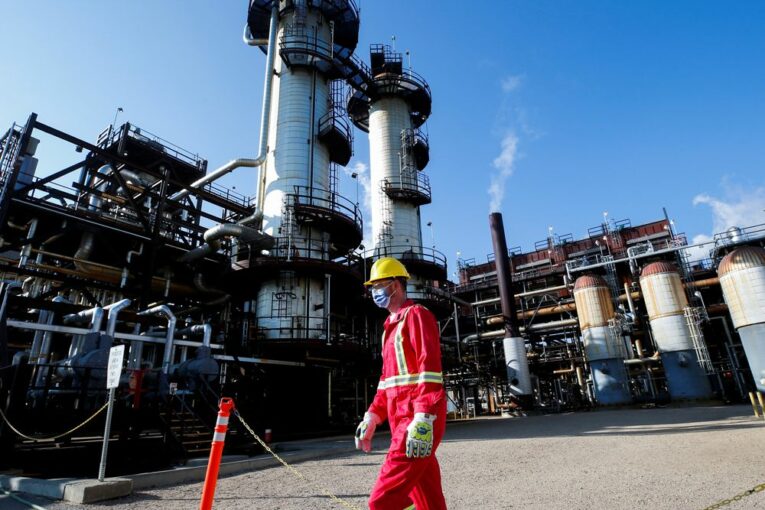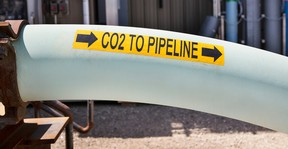
The Canadian energy industry needs policy clarity, not just government funding, to see investments flow into the country’s carbon capture, utilization and storage technology, says a senior industry executive.
“I think we need some aspects nailed down to a fiscal policy, not a verbal policy,” said Andy Mah, who retired at the end of last year as CEO of Advantage Energy Ltd. and now sits on its board.
“We hear politicians talk, but we need to somehow build it into the fiscal framework of Canada,” Mah said. “When that occurs, you’ll see more companies willing to put much more dollars into that technology and you’re going to get private investment.”
Clarity around Canada’s energy policy has been a common refrain from industry observers in recent months.
Canada has set a number of ambitious energy targets such as net-zero carbon emissions by 2050, but “the path toward this outcome should be elaborated for greater clarity, especially on sectoral contributions,” the International Energy Agency said in a report last week.
The Paris-based energy watchdog considers CCUS technology as a key lever for Canada to help reduce its greenhouse gas emissions intensity for crude oil production, which is currently the third-highest globally.
At stake are more than 440 major resource projects — worth more than $540 billion in investments — planned or under construction across Canada over the next 10 years, the IEA estimated. While Ottawa has introduced a number of new policy measures that take into account the views of many stakeholders, many of these projects remain challenged due to concerns around emissions and environmental damage, in addition to local and Indigenous opposition.
Mah spearheaded the development of Advantage’s CCUS unit, Entropy Inc., that secured a non-binding $300-million financing from an unnamed “energy transition” investor in December.
The company says it has acquired and developed numerous innovations that have driven CCUS costs down to levels where post-combustion projects (including capture, transport and storage) are economically viable at carbon pricing of $50 per tonne.
In Canada, prices are proposed to quadruple to $170 per tonne by 2030 compared to today.

“This is critical when you consider that at $170 CAD/T, major CCUS projects like Boundary Dam in Saskatchewan would be economically viable without government support,” according to Sproule, a Calgary-based energy consulting firm.
The Alberta government and the energy industry are seeking investment tax credits (ITC) of as much as 45 per cent from Ottawa to help fund the high cost of developing CCUS.
The federal government appears to be listening. Last year, the Liberal government proposed the introduction of ITC for capital invested in CCUS projects with the goal of reducing emissions by at least 15 megatonnes of CO2 annually.
The credits are expected to take effect in 2022 and be available for a broad range of CCUS applications across different industrial segments such as concrete, plastics, fuels, including low-carbon hydrogen projects and direct air capture projects, but not for enhanced oil recovery projects.
Jonathan Wilkinson, federal minister of natural resource, told Bloomberg that Ottawa will probably include the tax credit in the next budget and detail the goal to cut emissions 40 per cent to 45 per cent below 2005 levels by March. The tax incentive would be similar to what’s offered in the U.S., Wilkinson said.
The tax credits would encourage the energy industry to invest heavily in the technology and capture a lucrative new revenue stream as the decarbonization drive gathers steam across the economy.
Mah said Entropy has signed eight memoranda of understanding to capture 1.8 million tonnes per annum and just over $800 million of estimated net capital expenditures.
“In addition to MOU projects, Entropy continues to be engaged with numerous other third-party emitters in multiple industrial applications including boilers, compressors, cement production, reformers, chemical plants and power generation, in multiple jurisdictions. These evolving projects exceed 3 mtpa in aggregate, in addition to the projects under MOU,” the company said in a statement late last year.
Mah says there is some policy hesitancy in Ottawa as the optics of giving money to oil and gas industries may not sit well with certain quarters, but there is need for a clear-eyed view on energy transition.
“If we produce a net-zero energy unit of natural gas, what’s the difference between that and solar power? We (the oilpatch) have the ability to leverage our technical expertise, our people and everything that we’ve done, to get there quickly. It’s faster than some of the other new technologies that are being developed.”
Four of the 33 CCUS projects operating worldwide are in Canada, second only to the United States, which has 12 facilities.
Apart from the Boundary Dam, Saskatchewan is also home to Weyburn-Midale CCUS facility, while Shell Canada Ltd. operates the Quest project near Edmonton on behalf of Athabasca Oil Sands Project, which is 70 per cent owned by Canadian Natural Resources Ltd and an affiliate, 20 per cent by Chevron Canada Ltd and 10 per cent Shell through certain subsidiaries. Meanwhile, the Alberta Carbon Trunk Line Project captures CO2 from North West Redwater Sturgeon Refinery.
All four projects have benefitted from various forms of government funding and support.
The Alberta government is also reportedly proceeding “very, very quickly” on its next carbon sequestration hub in the Cold Lake region that will serve oilsands producers, Energy Minister Sonya Savage told Reuters last week.
Alberta is currently accepting requests for proposals to operate an underground carbon storage hub serving the Alberta Industrial Heartland zone near Edmonton. The process to select an operator for another hub near Cold Lake will come “on the heels” of that, Savage said in an interview with the news agency.
“We are going to need to move on Cold Lake very, very quickly after Heartland,” Savage said. “It’s a hub that will give certainty to oilsands and heavy oil production.”
Advantage, which aims to get to net-zero by 2025, believes the decarbonization drive will help the company monetize its light oil and gas reserves in the Montney basin.
The wider natural gas industry is also looking to play a role in development of blue hydrogen, which requires heavy investment in CCUS to capture emissions.
Mah says consumers will also start pressuring governments to secure cheaper energy supplies as inflation surges, but there will be a period of dislocation in the market.
“How much are you willing to pay for your power heating? And for gasoline, travel and food — all that goes up?,” Mah noted. “We have seen pushback in Europe, where they are fighting over energy prices in some countries. That is going to be the kind of the indicators in North America that will tell us where some of these prices will end up.”
Additional reporting by Reuters
• Email: [email protected] | Twitter: Yad_FPEnergy
You can read more of the news on source
